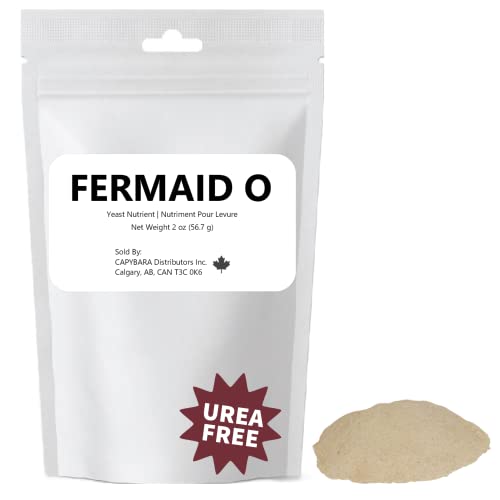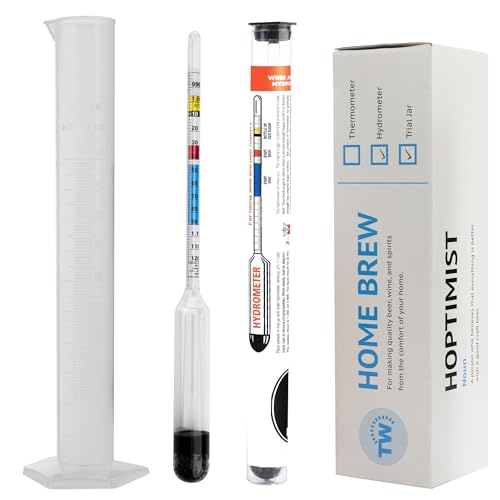Hi all
I’m thinking of returning to home brewing after an absence of over a decade but have some queries I hope you folks can help with. I’ll explain the reasoning for my questions (hence my rambling tome), but the impatient can skip to the end where I’ll summarise…
Right, first up is batch size. I don’t have room for the full 5 gallon brews in 6.5g bucket brews I used to do – I’m limited to one shelf in a cupboard. I was looking at 1 US gallon brew kits, but I’m concerned that after losses to trub and krausen, it’ll be not much bang for buck/effort. A 2G/10L or 3G/15L bucket isn’t that much bigger in size (mostly diameter rather than height) so I might go bigger.
Which bring me to my first question – what’s a suitable amount of headroom for a brew? I note that the buckets seem to have a bit of headroom over stated capacity, but probably not enough for a primary fermentation. I assume a 10L brew in a 15L bucket would be fine, but would a 3.8L (American gallon) brew in the same bucket be too much headroom?
Second question – in small batch brewing, how do you take samples? The old trial jar and hydrometer method seems disproportionately wasteful. I thought I’d get a Brix spectrometer and use a sterilised pipette to take a sample?
Question 3 – sterilisation. I used to hate DWP and note with joy that no-rinse sanitisers are commonly available now. How long do these last once made up? Could I keep – for example – a jam jar of StarSan solution made up for sterilising my sample pipette? I assume it’s a bad idea to keep a spray bottle made up as the acid attacks plastic?
Question 4 – I see secondary fermentation is mostly out of favour (yay!). Is it OK to add other ingredients (coffee, chocolate, fruit?) to a primary fermenter or will that be sitting on trub too long? Do I need to consider a second, smaller, bucket if I go down that route?
Question 5 – bottling. I was planning on bottling from primary straight to bottle using an auto syphon (and clip!) and bottling wand, as going the bottling bucket route requires more kit and increases the risk of me oxidising the beer through stupidity. Am I being stupid, and should I just get a bottling bucket? (I suppose I could remove the tap and stack it outside the primary when not in use).
Some other info:
I was thinking of starting out very simple – using 1 can from a 2 can kit and brewing short to 10L. Then, once I’ve got my brewday and bottling technique sorted out, venturing back into extract brewing. I don’t currently foresee doing any AG brews- I don’t have time or space for the equipment.
I don’t have much space in the flat for storing conditioning beer, but I do have access to a storage unit at the end of the garden for cold conditioning. Sadly, it has no water, electricity of much headroom so is unsuitable as a brewhouse.
Questions;
1. How much headroom does a primary fermenter need?
2. How do you sample small batches?
3. How long does StarSan last once made up into solution?
4. Is it OK to add chocolate/fruit etc to primary or should I rack off?
5. Bottle bucket or fill from primary?
Thanks!
I’m thinking of returning to home brewing after an absence of over a decade but have some queries I hope you folks can help with. I’ll explain the reasoning for my questions (hence my rambling tome), but the impatient can skip to the end where I’ll summarise…
Right, first up is batch size. I don’t have room for the full 5 gallon brews in 6.5g bucket brews I used to do – I’m limited to one shelf in a cupboard. I was looking at 1 US gallon brew kits, but I’m concerned that after losses to trub and krausen, it’ll be not much bang for buck/effort. A 2G/10L or 3G/15L bucket isn’t that much bigger in size (mostly diameter rather than height) so I might go bigger.
Which bring me to my first question – what’s a suitable amount of headroom for a brew? I note that the buckets seem to have a bit of headroom over stated capacity, but probably not enough for a primary fermentation. I assume a 10L brew in a 15L bucket would be fine, but would a 3.8L (American gallon) brew in the same bucket be too much headroom?
Second question – in small batch brewing, how do you take samples? The old trial jar and hydrometer method seems disproportionately wasteful. I thought I’d get a Brix spectrometer and use a sterilised pipette to take a sample?
Question 3 – sterilisation. I used to hate DWP and note with joy that no-rinse sanitisers are commonly available now. How long do these last once made up? Could I keep – for example – a jam jar of StarSan solution made up for sterilising my sample pipette? I assume it’s a bad idea to keep a spray bottle made up as the acid attacks plastic?
Question 4 – I see secondary fermentation is mostly out of favour (yay!). Is it OK to add other ingredients (coffee, chocolate, fruit?) to a primary fermenter or will that be sitting on trub too long? Do I need to consider a second, smaller, bucket if I go down that route?
Question 5 – bottling. I was planning on bottling from primary straight to bottle using an auto syphon (and clip!) and bottling wand, as going the bottling bucket route requires more kit and increases the risk of me oxidising the beer through stupidity. Am I being stupid, and should I just get a bottling bucket? (I suppose I could remove the tap and stack it outside the primary when not in use).
Some other info:
I was thinking of starting out very simple – using 1 can from a 2 can kit and brewing short to 10L. Then, once I’ve got my brewday and bottling technique sorted out, venturing back into extract brewing. I don’t currently foresee doing any AG brews- I don’t have time or space for the equipment.
I don’t have much space in the flat for storing conditioning beer, but I do have access to a storage unit at the end of the garden for cold conditioning. Sadly, it has no water, electricity of much headroom so is unsuitable as a brewhouse.
Questions;
1. How much headroom does a primary fermenter need?
2. How do you sample small batches?
3. How long does StarSan last once made up into solution?
4. Is it OK to add chocolate/fruit etc to primary or should I rack off?
5. Bottle bucket or fill from primary?
Thanks!






























![BREWING THERMOMETER STICKERS ACCURATELY MONITOR FERMENTING BEER & WINE LIQUID TEMPERATURES 5PCS HOME BREW SPIRITS WINE LCD ADHESIVE [US]](https://m.media-amazon.com/images/I/311DDjo2X3L._SL500_.jpg)










